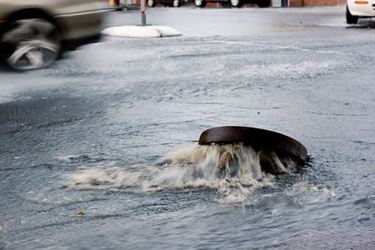With Goal To Eliminate Combined Sewer Overflows By 2035, Milwaukee Is Creating A National Template


Combined sewer overflows (CSOs) — which see untreated wastewater flow into waterbodies as the result of flooding and inadequate infrastructure — are a growing problem in Milwaukee, as they are in much of the country. But officials there are optimistic that innovative solutions can finally put an end to them, once and for all.
“The Milwaukee Metropolitan Sewerage District in 2010 set a goal of having no overflows, no basement backups and an improved storm water management system by 2035,” WPR reported.
But weather conditions and the growing costs to meet that goal are not exactly on officials’ side.
“The 2010s were Wisconsin’s wettest decade in recorded history, as extreme precipitation events became more common,” per WPR. “The extreme events cost tens-to-hundreds of millions of dollars in damage over the decade. With rising temperatures, annual rainfall could increase up to 15 percent in the next 30 years.”
To meet its lofty goal, the district is working toward a range of green infrastructure initiatives, including porous pavement, green roofs, bioswales, and an increased presence of native plants and soil. It is encouraging private financing to bring additional green infrastructure to the city as well. And Milwaukee is buying and managing property in the upper reaches of its watershed, with the goal of reducing the amount of water that enters source bodies upstream, to eliminate the flood risk downstream.
“Milwaukee … now aims to eliminate sewer overflows entirely by 2035, capturing 50 million gallons of runoff with green infrastructure alone,” according to Grist.
As Milwaukee pursues a range of solutions to the growing threat of CSOs, it may be creating a template for other, similar municipalities to follow. As urban sprawl grows and climate change increases the threat of flooding around the country, it’s likely that forward-thinking cities will set goals similar to Milwaukee’s. Though the costs for meeting these goals are going to rise alongside these ambitions.
“[Alliance for the Great Lakes President Joel] Brammeier said states and municipalities can use federal infrastructure dollars to address this matter locally,” according to WPR. “Without such funds, these places would have trouble affording necessary solutions, he said.”
To read more about how cities around the country try to contain combined sewer overflows, visit Water Online’s Stormwater Management Solutions Center.
